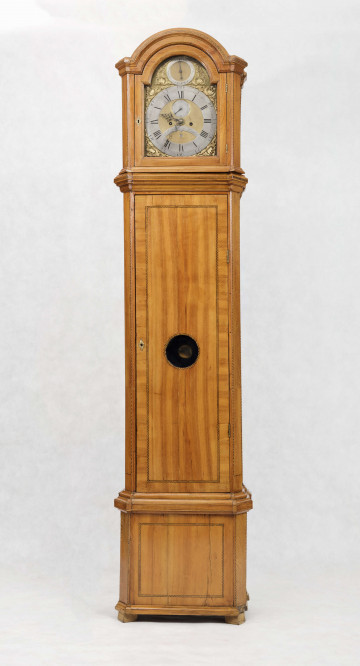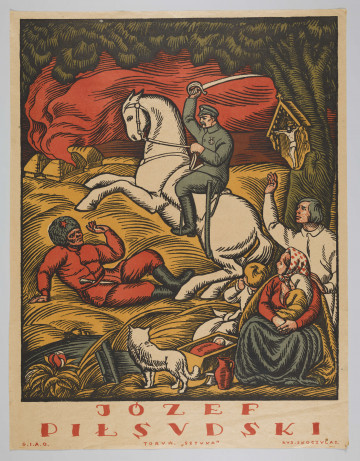
Floor cabinet clock
National Museum in Lublin
Part of the collection: Clocks
The French clock belongs to a type frequently encountered in the Imperial period, in which the form of the case and decoration were used to convey symbolic and propaganda messages. It is reminiscent of a small monument, with the plinth topped with a rock and, on it, an equestrian statue of Napoleon I raising his hat in a greeting gesture. The inscription on the plinth commemorates the surrender of the Austrian army at Ulm on 20 October 1805, after a battle fought near the city. At the same time, it generously pays tribute to the bravery of the defeated opponents (Honneur au Courage malheureux - honour for unfortunate courage). The viewer's attention is drawn at first sight to the superbly modelled figure of the horse. It is the Emperor's favourite mount, which he brought from Egypt and called Marengo in commemoration of another victorious battle. The brave horse carried him on its back at Austerlitz, Jena, Wagram, and the unfortunate Russian campaign. It accompanied him in exile on Elba and during the last battle of Waterloo, in which he was wounded. An English officer who recognised the imperial steed on the battlefield saved it, and transported it to England, where Marengo lived to the ripe old age of thirty-eight. Its skeleton is one of the main attractions of the National Army Museum in London. However, it only has two hind hooves, as the last owner kept the front hooves for himself, shoeing them in silver and making them into saucer holders for the then fashionable snuff boxes. The Napoleonic era was short-lived, but it profoundly changed the image of Europe. Napoleon's fame outlived him, and the legend lasted even longer, inspiring artists from various fields of art. The form of the clock commemorating one of the Emperor's most important military victories with minor variations in detail was still used in the 2nd half of the 19th century.
Barbara Czajkowska
Author / creator
Dimensions
cały obiekt: height: 35 cm, width: 54 cm
Object type
goldsmith's art
Technique
patination
Material
bronze, steel
Creation time / dating
Creation / finding place
Owner
The National Museum in Lublin
Identification number
Location / status

National Museum in Lublin

1920
National Museum in Lublin

1789
National Museum in Lublin
DISCOVER this TOPIC
National Museum in Lublin
DISCOVER this PATH
Educational path